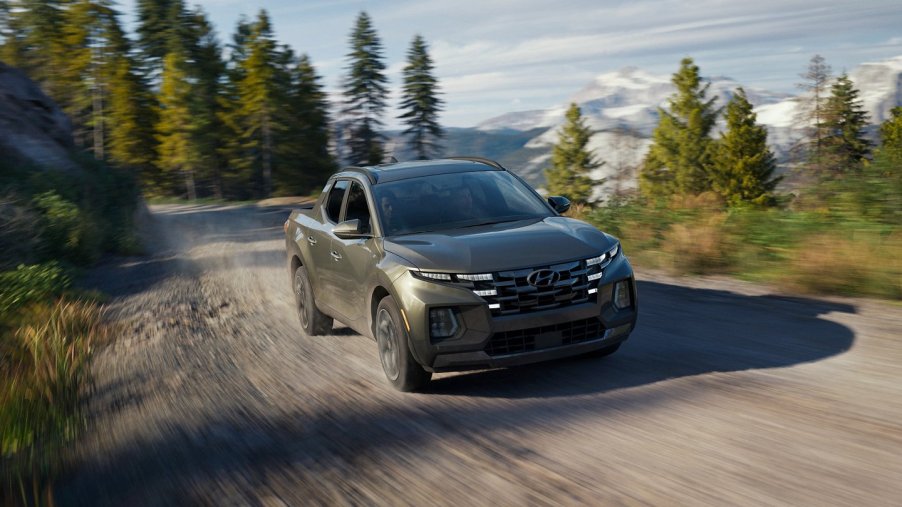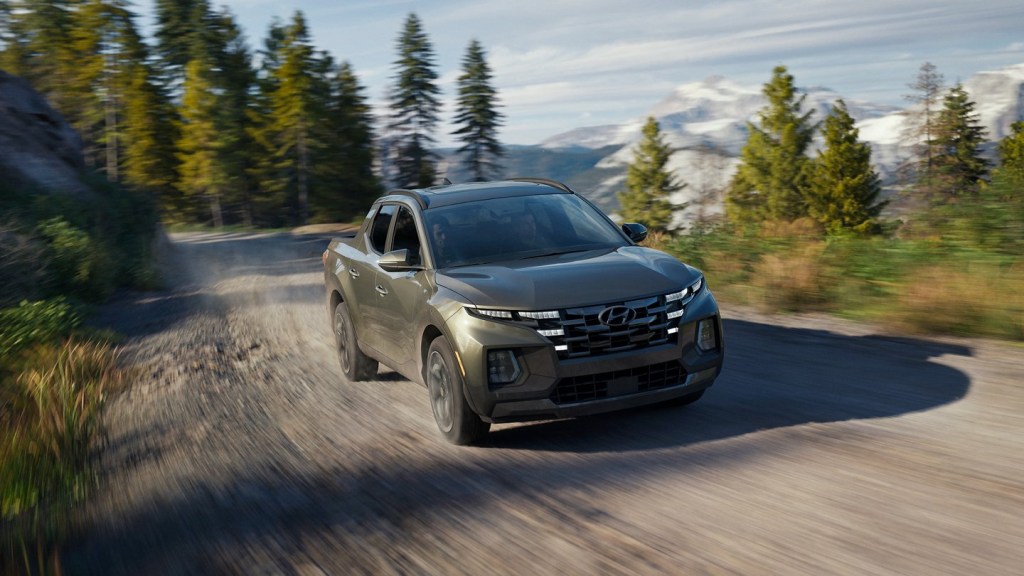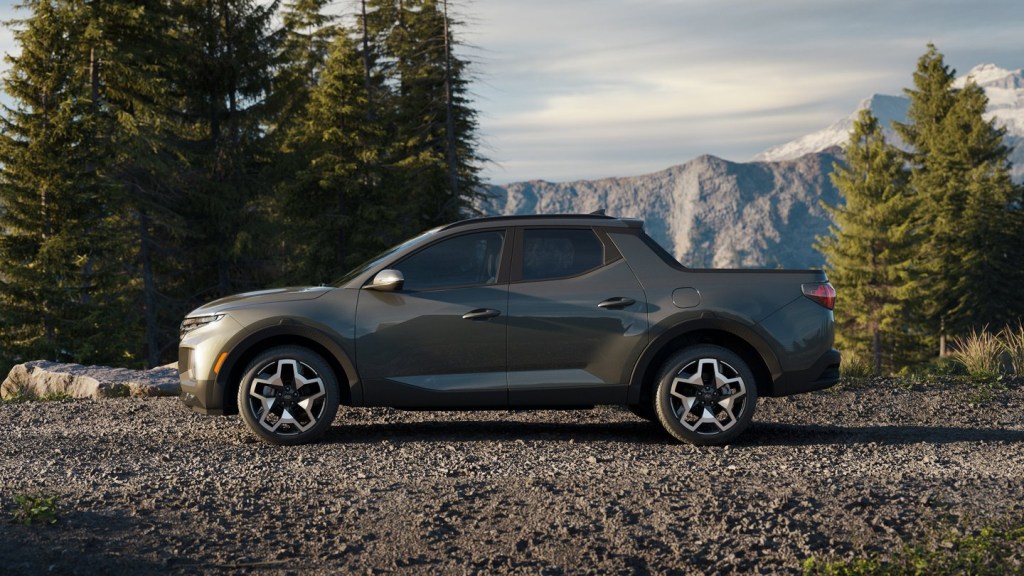
2022 Hyundai Santa Cruz Delivers Disappointing Fuel Economy
The 2022 Hyundai Santa Cruz is moving full-speed ahead. While Hyundai has not released all pertinent information yet, the EPA-estimated fuel economy numbers are out. How does this compact pickup truck stack up against other trucks?
How much does a 2022 Hyundai Santa Cruz cost?

The new 2022 Hyundai Santa Cruz has made quite the splash as it entered the pickup truck scene. Since then, the Environmental Protection Agency (EPA) has released some fuel economy numbers for the Santa Cruz, but these numbers might not be as good you think. The trim levels released by Hyundai are the SE, SEL, and SEL Premium. Thus far, Hyundai has not released the pricing for any of the trim levels.
The Santa Cruz base trim (SE) has a 2.5L inline-four getting 191 hp and 181 lb-ft. It has a 3,500-pound towing capacity and a 4.3-foot composite molded bed. This comes with an eight-speed automatic transmission.
A 2.5L turbocharged Inline four getting 281 hp and 311 lb-ft is also available. The next trim up (SEL) has upgraded safety features like blind-spot collision avoidance and the Bluelink connected car system.
The SEL Premium option is available with an eight-speed dual-clutch automatic. Front-wheel drive is the standard option, but buyers can also upgrade to the all-wheel-drive option. It comes with LED headlights, a digital key, and a leather steering wheel.
How does the Santa Cruz compare to other pickup trucks?

We can compare the Santa Cruz with other trucks using the U.S. Department of Energy comparison tool. The SE trim with 191 hp got the best fuel economy when MotorTrend tested it. In the all-wheel-drive option, the 2.5L engine got an EPA-estimated 21 mpg in the city, 27 mpg on the highway, and 23 mpg combined.
If you pick the front-wheel-drive option, drivers will get the same 21 mpg in the city and 23 mpg combined. The Santa Cruz loses one mpg bringing it down to 26 mph on the highway on the highway. The turbocharged all-wheel-drive option isn’t any better. This option gets 19 mpg in the city, 22 mpg combined, and 27 mpg on the highway.
How does this stack up against similar trucks? The Toyota Tacoma gets an estimated 20 mpg in the city, 23 mpg on the highway, and 21 mpg combined. This is with a 2.7L four-cylinder engine in the rear-wheel-drive option.
From the 2021 Honda Ridgeline’s 2.5L V6, the EPA-estimated numbers are 18 mpg in the city, 24 mpg on the highway, and 21 mpg combined. The Chevrolet Colorado delivers an estimated 20 mpg in the city, 30 mpg on the highway, and 23 mpg combined. The 2021 Ford F-150 four-wheel-drive pickup gets 19 mpg in the city, 24 mpg on the highway, and 21 mpg combined. And that is a much larger truck with a 2.7L six-cylinder turbo engine.
How does it compare to a Ford F-150 or Toyota Tacoma?
Given the small size and compact nature of the Santa Cruz, these numbers are a bit disappointing. Looking at the comparisons below, the small pickup truck gets similar fuel economy to a much larger, full-size truck.
AWD Santa Cruz 2.5L – 21/27/23 mpg city/highway/combined
FWD Santa Cruz 2.5L – 21/26/23 mpg city/highway/combined
AWD Santa Cruz 2.5L turbocharged – 19/27/22 mpg city/highway/combined
RWD Toyota Tacoma 2.7L – 20/23/21 mpg city/highway/combined
RWD Chevrolet Colorado diesel – 20/30/23 mpg city/highway/combined
4WD Ford F-150 – 19/24/21 mpg city/highway/combined
However, these numbers are not the worst on the market. The Santa Cruz will still fit the bill for most budgets, especially for the rest of the features. But for those concerned with the smaller size of the Santa Cruz, there might be a bigger truck delivering the same fuel economy. The U.S. Department of Energy fuel comparison tool is a good place to start if you consider purchasing a new pickup truck.



